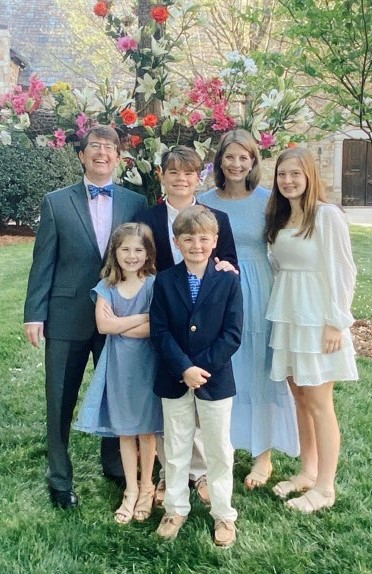We helped a 65-year-old man recover a solid settlement after he got hit by a car walking across the street.
William lived alone, but enjoyed the loving support of his adult daughter. They contacted us because they just didn’t know what to do legally or how to handle his mounting medical bills. Since he would be unable to stay at home for weeks without a full-time caretaker, I actually went and saw him at his inpatient rehab just to answer his questions and put his mind at ease. After that, we moved his case as quickly as providers sending us records would allow, sending regular updates to the claims adjuster to support his case for a substantial settlement.
How the Injury Happened
William had lawfully crossed Allston Road in Spartanburg at the crosswalk with the pedestrian light; the at-fault driver attempted to turn right on red, hitting him. The passenger-side front wheel ran over William’s right foot, pinning it under the wheel. As William struggled to maintain balance, he fell back, wrenching his entire body to the left. The force of the fall drove through his pelvis, breaking it. Then the right back side of his head slammed into the pavement.
Building William’s Case
When pedestrians get hit by a vehicle, you’ve got to defeat the defense the driver couldn’t see the pedestrian. To do that, we pointed out it was March 22, 2012 at 7:15 AM. Morning light shone on a clear day. The traffic report revealed the officer found the defendant was distracted, causing the collision.
Next, I showed how the at-fault driver broke several laws:
- South Carolina Code §56-5-970(C)(3) provides that cars facing a red light can “cautiously enter the intersection to turn right,” but “shall yield the right of way to pedestrians lawfully within an adjacent crosswalk and to other traffic lawfully using the intersection.” The reference to “traffic” includes pedestrians. § 56-5-570.
- §56-5-990(1): The pedestrian control signal “walk” requires that pedestrians “shall be given the right of way by the drivers of all vehicles.”
- §56-5-3230 requires “every driver of a vehicle shall exercise due care to avoid colliding with any pedestrian.”
I presented arguments showing William was actually eligible to get punitive damages for this incident. Punitive damages are limited to reckless conduct, but this case qualified because the at-fault driver turned right on red in broad daylight on top of a pedestrian who had a right to be there.
The Aftermath: William’s Injuries
Like many pedestrian victims of car crashes, William suffered grave injuries. Impact broke his pelvis, requiring a five-day hospital stay followed by three weeks in inpatient rehab. After that, he was confined to a wheelchair for two solid weeks, then progressed to a walker for another two weeks before graduating to a walking cane on April 26. Until he got off his walker, William was essentially homebound.
We knew the insurance company wouldn’t compensate William without a clear, thorough picture of the full extent of his injuries. In painstaking detail derived from stacks of medical records and interviews with William and his daughter, I helped the insurance company put proper value on his pain and suffering, which I call human loss:
- For five to six days, William was basically helpless. He needed help just to get out of bed, bathe, dress, and go to the bathroom.
- He had to learn to walk again in the hospital.
- He sustained a concussion that left him with nausea and vertigo for 10 days, which was sometimes worse than his pelvis pain.
- Pain: initially, it was the worst he’d ever known. Even two months after, William still dealt with a dull pain that worsened by the end of the day. Seven months later, William awoke stiff and painful every morning.
- William’s limitations left him frustrated. He could only walk a mile before hurting and giving out. Just walking on uneven ground hurt. Stairs were harder. He still limped sometimes.
- An outdoorsy, active man who often walked four to five miles a day, William developed situational depression from his inability to live his life. He felt trapped in the hospital and really down from being stripped of his independence and ability to be active. He lost his prized stamina and the ability to maintain top physical form for his age, including weight gain that embarrassed him. I showed how this caused a loss of his self-image, leaving him sad and frustrated.
Permanent Injury And Future Medical Care
Pedestrian victims, like all auto accident victims, can be compensated for permanent injury. William’s orthopedist concluded he suffered a 15% impairment of his right leg and might need a total hip replacement.
I obtained a questionnaire from the doctor showing William would suffer permanent pain for life, with arthritis.
Pedestrian victims can also be compensated for future medical care, if you do it the right way. I did that to support compensation for a potential hip replacement that could cost $37,000.
The Outcome
In sum, I struggled how William and his family struggled physically and emotionally, but fought through it.
We also helped him reap the benefit of his Medicare medical insurance, by negotiating a reduced repayment for what Medicare paid, in the process called subrogation. This gave William more money to help him recover financially.
Luckily, the at-fault driver had great insurance coverage. After considering all our medical records and extensive submissions, we negotiated a settlement offer of $200,000—without ever filing a lawsuit.
Because William felt good about taking it and didn’t want the delay and strain of litigation, he agreed to accept it. He’d already had a long road, and was ready to move on. While a lawsuit might have brought a higher offer after months or even years of legal wrangling, I’m grateful we could move his case to an efficient, satisfying end for him. Like all our clients, he’s who his case was about.


